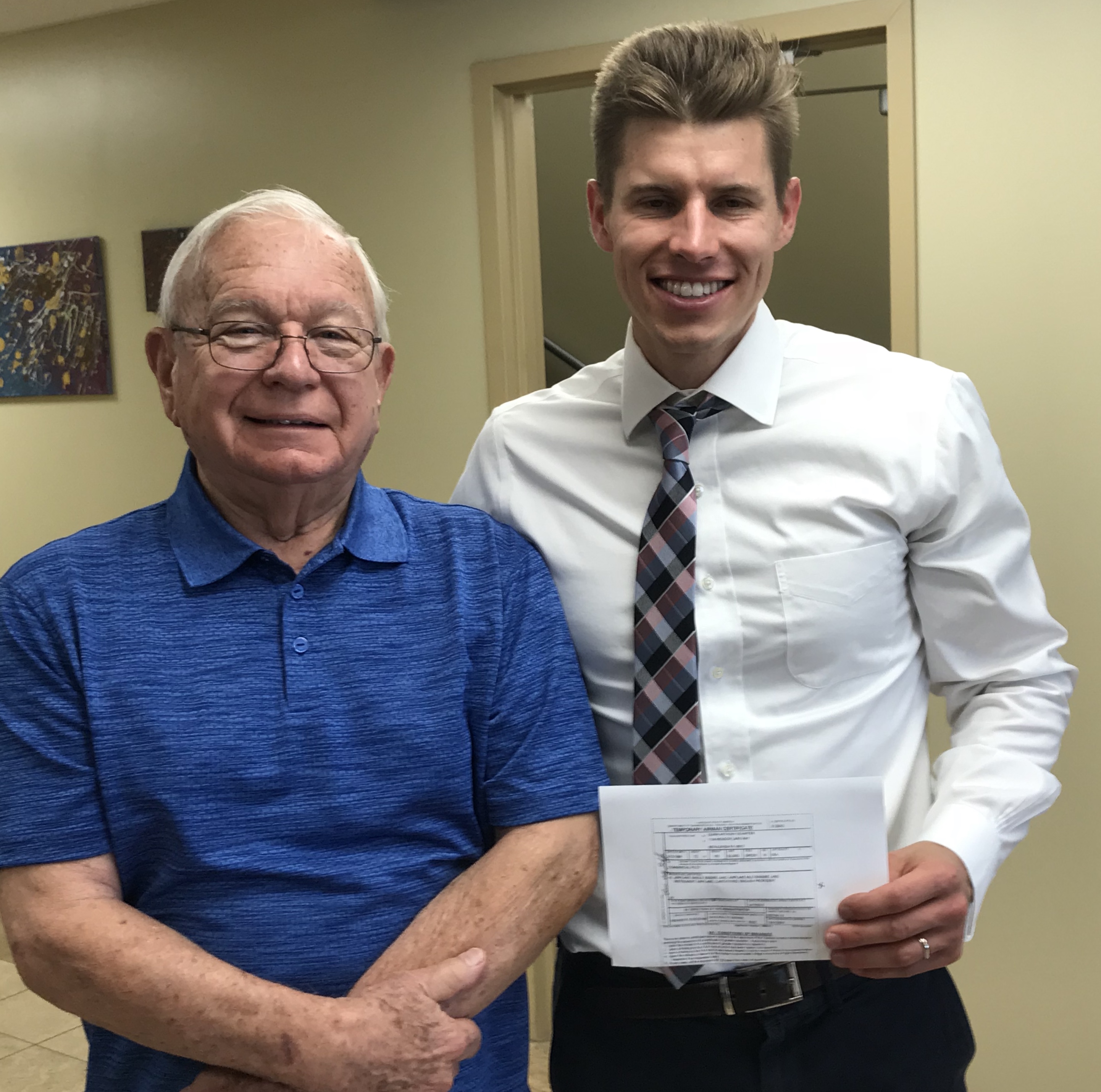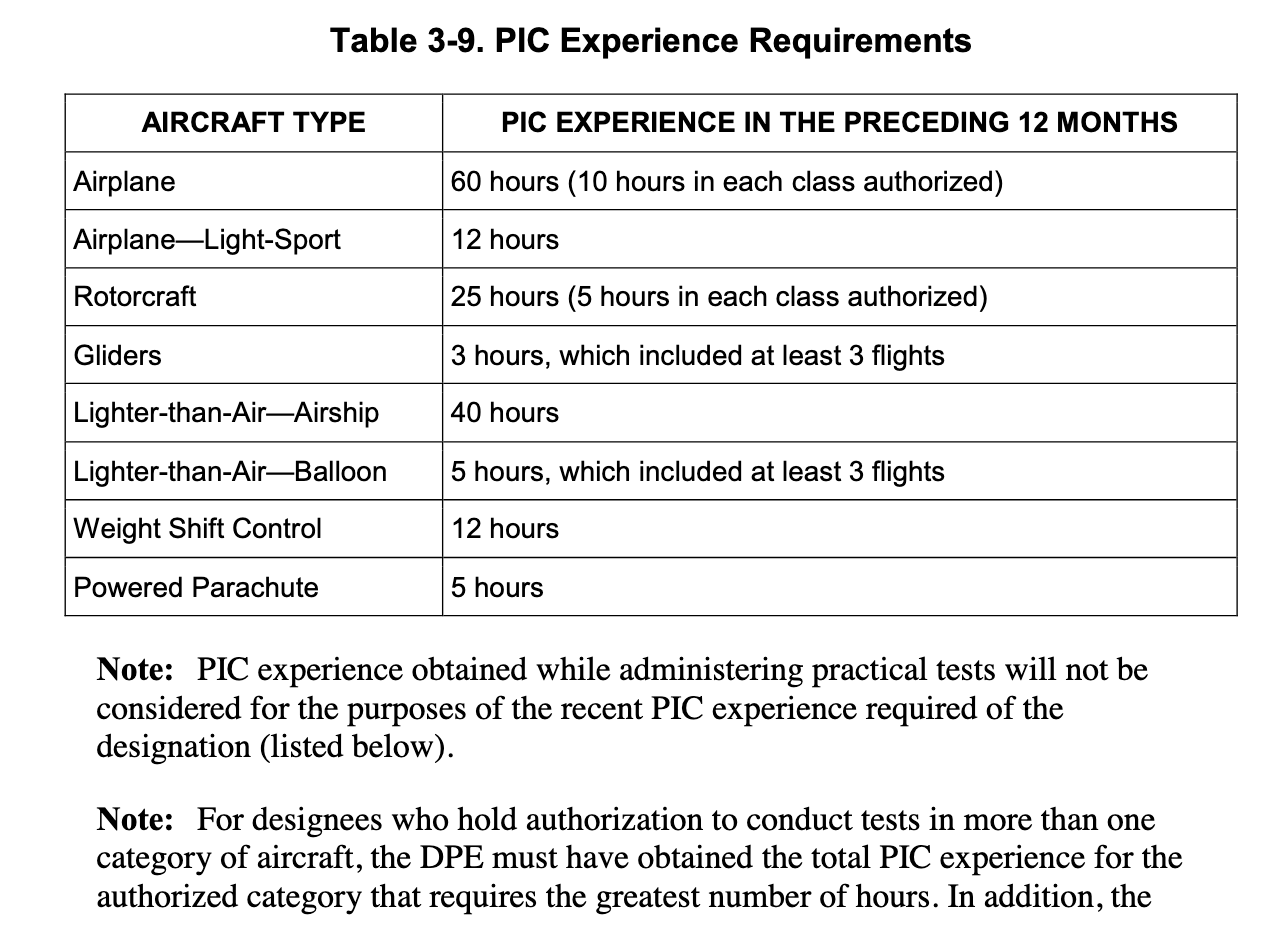 Most CFIs log thousands of hours as PIC but unfortunately often do not personally fly enough to stay sharp. DPEs are even worse about flying on their own and maintaining their personal proficiency – and by regulation, a DPE does not log their flight time during tests as PIC. The FAA recently discovered that some DPEs were flying for years and not getting any experience as PIC. This can be a tragic situation since these people are the professionals we trust to be experts in the cockpit. The FAA is now enforcing new guidance requiring a minimum of 60 hours of PIC annually for every DPE to be recertified – but no “commander time” is yet legally required for CFIs!
Most CFIs log thousands of hours as PIC but unfortunately often do not personally fly enough to stay sharp. DPEs are even worse about flying on their own and maintaining their personal proficiency – and by regulation, a DPE does not log their flight time during tests as PIC. The FAA recently discovered that some DPEs were flying for years and not getting any experience as PIC. This can be a tragic situation since these people are the professionals we trust to be experts in the cockpit. The FAA is now enforcing new guidance requiring a minimum of 60 hours of PIC annually for every DPE to be recertified – but no “commander time” is yet legally required for CFIs!

“Right seat rust” is a common problem in our industry but it is largely not exposed or addressed. Retaining piloting privileges as a CFI or DPE only requires the same flight review every pilot gets, signed off every two years by a CFI. This is despite flying at the edges of the flight envelope with clients and applicants. (a CFI teaching aerobatics also has no extra requirements) And we all know a flight review can be a brief and perfunctory experience. Since DPEs and CFIs are regarded as “industry flight experts” it is easy to believe they are not vulnerable to loss of proficiency through inactivity. The joke in our flight school used to be that every “expert in the right seat” instantly loses 20 IQ points and lots of skill when they grab the yoke – “why did I say “I have the flight controls?” There is no magic assuring flight proficiency for anyone; we all need to get out and stay sharp!
SAFE worked with the Flight Safety Institute and other industry partners to develop the Focused Flight Review and highly recommends this program for pilots at all levels. The training here is fun and exceeds the minimum FAA requirements. Following this guidance enhances and expands every pilot’s skills and knowledge. If you have not reviewed this excellent series of flight profiles, please check it out and use it with your clients http://focusedflightreview.org We also recommend finding a current and qualified instructor and flying the more challenging maneuvers in our SAFE Extended Flight Envelope syllabus. To be safe in flight we all need to be deeply and recently trained to respond correctly to an upset – instinctively unloading and controlling our aircraft. It is especially important for our “aviation professionals” to be current and sharp. Fly safe out there (and often).

SAFECFI-PRO™ workshop is open to every aviation educator at every level (even if you are working on your CFI?) June10/11 at Sporty’s Pilot Shop.
is open to every aviation educator at every level (even if you are working on your CFI?) June10/11 at Sporty’s Pilot Shop.
Join SAFE to support our safety mission of generating aviation excellence in teaching and flying. Our amazing member benefits pay back your contribution (1/3 off your ForeFlight subscription)! Our FREE SAFE Toolkit App puts required pilot endorsements and experience requirements right on your smartphone and facilitates CFI+DPE teamwork. Our CFI insurance was developed by SAFE specifically for CFIs (and is the best value in the business).
